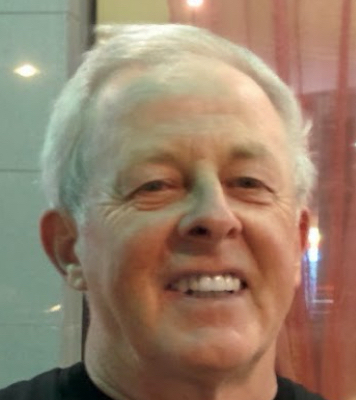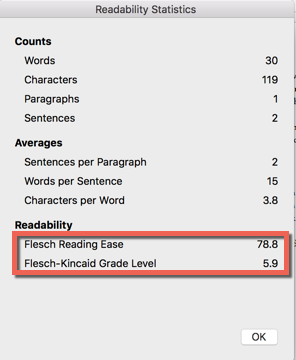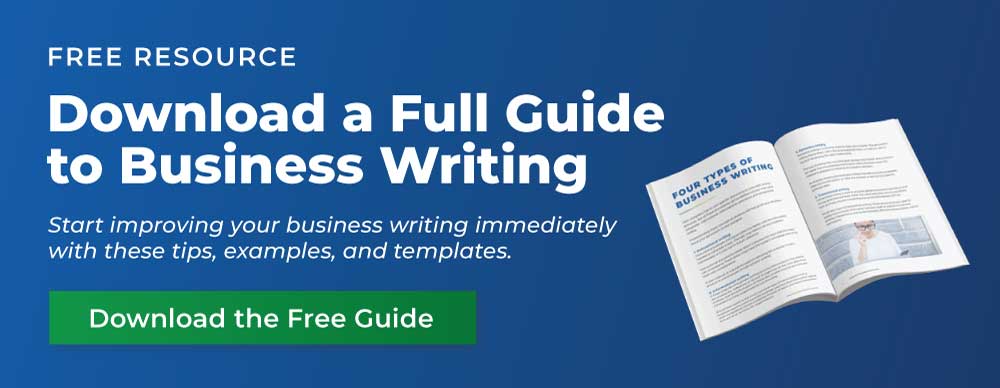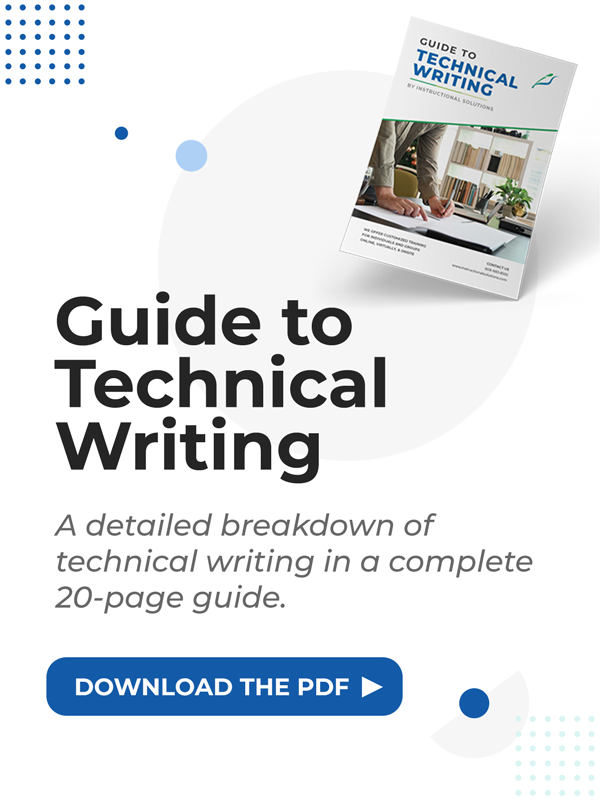Edit to Awesome

Originally published June 23, 2021, updated October 4, 2024

Table of Contents
Do you hate to write? Some of the best writers, and many of the worst, say the same.
Don’t worry: Writing that gets results — whether an article, email, proposal, or whatever you need — isn’t about your writing. Not really.
Here’s the secret to editing business writing.
First, you plan. Always. Then you draft. Finally, you edit — Edit to Awesome.
Editing is where the magic happens. It’s where you pick through that ugly, disjointed, and unwieldy mess that’s your draft and build, and refine the brilliance.
Once you learn how you’ll love writing again — or maybe love it for the first time ever.
I first heard the term "Edit to Awesome" from Joanna Wiebe, the Canadian plains copywriting wizard at CopyHackers.
Like any good writer/editor, I’ve been Editing to Awesome naturally for years. I’d just never heard it labeled so accurately.
But, what exactly do I mean when I say Edit to Awesome? And, how do you do it?
Think about it this way. You write the content you need to get the job done. Make sure it answers your readers’ questions and problems. Then do a quick edit and proofing to make it clean and readable.
OK, first step complete.
Still looks pretty shabby? Of course, it does. Listen to what Hemingway said, “The first draft of anything is sh##.”
He’s right. Don’t stop after you’ve written that first draft — in fact, you’ve just begun.
Next step: Editing.
When you Edit to Awesome, you take that first draft and transform it into polished steel — writing that gets your company, service, or product noticed, understood, or shared.
What’s the path to Awesome?
Think of it like this. It’s a final step in the writing process. You write the email, the article, the report, the webpage — whatever content you need for the task at hand.
It’s not that difficult when you pause to consider your reader, their questions, problems, and worries and give them the information that matters to them. Then write in such a way that they see and feel you understand them.
Here are five critical steps on the road to Awesome:
I’ll assume you have the basics — grammar, spelling, and punctuation handled.
Quick aside: don’t overlook your word processor’s spell-check. It cleans up the little mistakes, saving your eyes and focus for the bigger ones.
Those basics handled, you can now move onto the advanced techniques that will rocket your writing into the Awesome stratosphere.
1. Make your words flow
Remove any bumps that could slow or frustrate your reader.
A great first place to start:
Attack adverbs
Stephen King’s not at all shy on these amateurish “ly” endings. He says, “The road to hell is paved with adverbs.” They weaken your writing, even if they seem to offer an easy way out.
The solution? Sharpen that adverb ax, put on your steel-nibbed red pen, and attack the page. Replace those lazy adverbial horrors with powerful verbs and phrases.
“He presented boringly.” becomes
“His presentation put me to sleep.”“She hardly impressed anyone.” becomes
“She underwhelmed us all.”“Routers are completely useless in larger buildings.” becomes
“Routers break down in larger buildings.”
Transitions
Face it, your writing needs to cover many points and accomplish many objectives. This means you will need to create smooth segues between points.
Transitions light the reader’s path. Certain words and phrases are the beacons. Consider “on the other hand,” “nevertheless,” “for instance,” or “here’s how,” or my example of "face it," in the previous paragraph. Using transition slides like these will glide your reader from one point to the next.
“On the other hand, consider the consequences if you don’t enact these ideas.”
“For instance, many women rely on college friends to introduce them.”
“Nevertheless, what I just said may not apply to you. If it doesn’t, try plan B.”
2. Keep most sentences and paragraphs short
Ever encountered a block of text and moved on because it was all too intimidating?
The content may have been excellent, but the writer didn’t understand the importance of visual crispness and lost their chance with that material.
Copywriting legend Gary Halbert says this: “Paragraphs are almost as important for how they look as what they say. They are maps of intent.”
Recognize the acronym tl;dr? Too long; didn’t read. You’ll see it in some blog comments. It’s the commenter’s admission that they skipped much of the post because it was too long.
Don’t let that happen. If you keep your sentence and paragraph length in check, you’ll avoid it.
How do you do that? Cut, cut, cut.
Cut long sentences into two or more. Most run-on sentences run on because you’re cramming too many ideas into one sentence. How can you spot them? One good sign is a sentence that contains too much punctuation, typically commas or semicolons.
Shorter words and shorter sentences create stronger messages. Remember: awesome editing is subtractive, not additive.
Plus this bonus. Using fewer words forces you to write tighter, with sharper focus.
Another good sentence/paragraph shortening device: bullet lists.
They automatically condense your thoughts and shorten your sentences. Check out our bullet-list primer here.
One final caveat. Ignore those who say short, clear, and concise writing is “dumbing down” your content. It’s just the opposite.
Microsoft believes so strongly that they included a readability statistics tool in MS-Word. It shows you how well you’re doing in creating concise, persuasive writing.
In fact, it has two precise reader comprehension measures: the Flesch Reading Ease and the Flesch-Kincaid Grade Level. These yardsticks gauge your writing and help you adjust to the audience you’re writing for.
You want a high Flesch Reading Ease score and a low Flesch-Kincaid Grade Level score.

3. Lose the jargon
I edit for tech companies and consultants. They’re jargon junkies. Sometimes jargon is necessary and even desirable. But, often not.
Unless you’re writing for tech sophisticates, keep it to a minimum. And, if you must use unfamiliar language, explain it in layman’s terms.
And acronyms. From AMA to API and ESP to FBO, they’re as rampant as pizza in Italy. If you’re writing for the in-crowd, carry on. But, when your readers aren’t familiar with the acronym, spell it out on the first usage.
Like this:
- AMA (ask me anything)
- API (application programming interface)
- ESP (email service provider)
- FBO (Facebook official)
4. Avoid redundancy and repetition
We all have them: words, phrases, and styles we overuse. It’s normal, but bad for your writing. Spot them (a good editor will do this for you), make a list, and then routinely run a search for them in any new writing you create. Use the search function, hunt them down, and kill them.
Same with any industry. Each has its overused or repetitive terms and phrases. Try this trick: create a style sheet that lists alternatives for these terms.
And don’t be afraid to learn from the pros. You’ll learn a lot by reading some of the top writers in your specialty. If they’re top writers, you can bet they’ve learned to banish repetition and redundancy. Study them.
5. Show no mercy to these three copy killers
We all have our idiosyncratic bad habits. So, let’s wrap up with 3 writing mortal sins that deserve special mention — and immediate ejection from your copy.
There is/there are
The worst of the worst. They’re too easy to spot — and too easy to correct to let slip through.
Look at these before and afters.
There are five different pies at the buffet.
BETTER: The buffet included five different pies.There are no more seats on the bus.
BETTER: The bus is full.There’s no way Joney will get into Cambridge.
BETTER: Joney doesn’t stand a chance of getting into Cambridge.
Hardly, really, mostly, very
This goes back to our earlier suggestion to ax adverbs. These four buggers deserve special mention because they’re everywhere. Keep guard and be merciless in eliminating them.
Remember the solution? Use a strong verb, and you won’t need these word weaklings.
"I hardly ever see her." becomes
"I never see her.""You really need to change." becomes
"You need to change.""It’s a very slow train." becomes
"The train drags.""I mostly want to rest on vacation." becomes
"I want to sleep for days on vacation."
It’s/its; lose/loose; they’re/their; who’s/whose, etc.
If any of these common word mix-ups plague you, put them on your special list to check in your final proofread.
But, remember this: Even though spell-checkers will bring common misuses to your attention and suggest options, you still need to know which choice to make. Take the time to tackle the ones that haunt you. It’s an investment for life.
Was that Awesome for You?
If not the first time, keep trying because you can get there. You can edit that horrible first draft into writing that advances your career and prompts admiration.
You have the map from stock standard to Awesome.
Just remember Hemingway’s words, and don’t pressure yourself to make your first draft sparkle. It doesn’t matter.
Why?
Because the magic happens when you edit. Join great writers who know there’s no such thing as good writing, only good re-writing (a less fancy way to say editing).
Now go get you some Awesome and all the great results it delivers.


